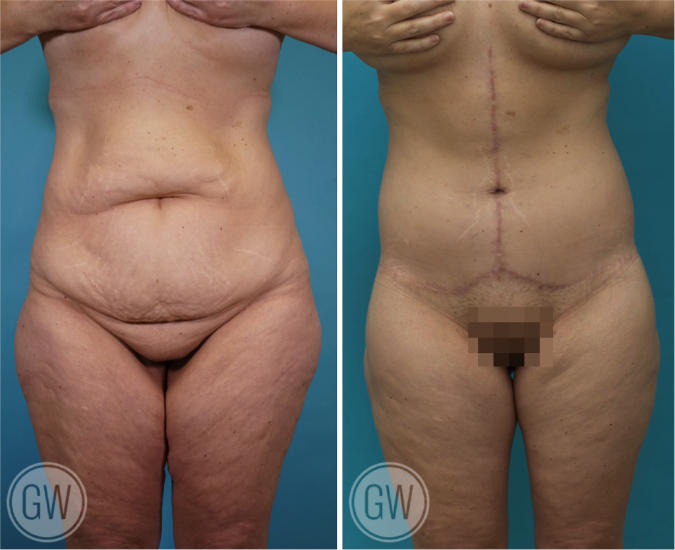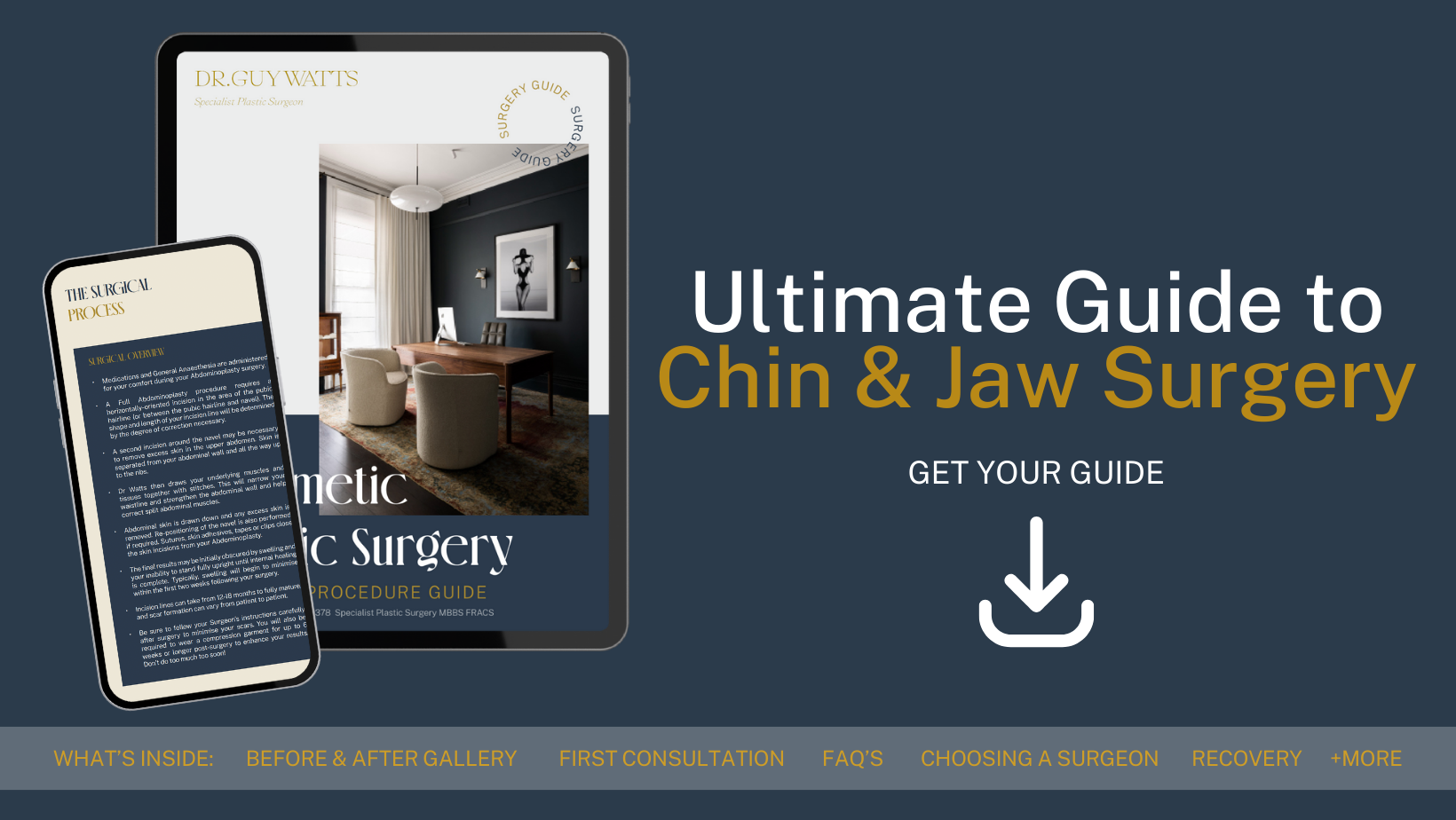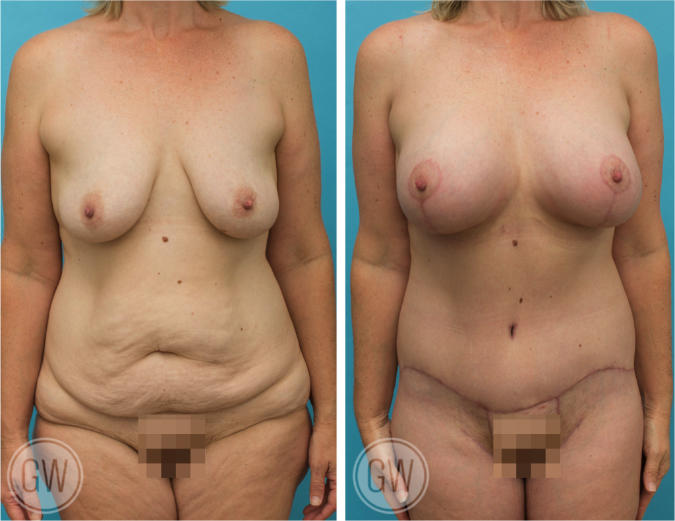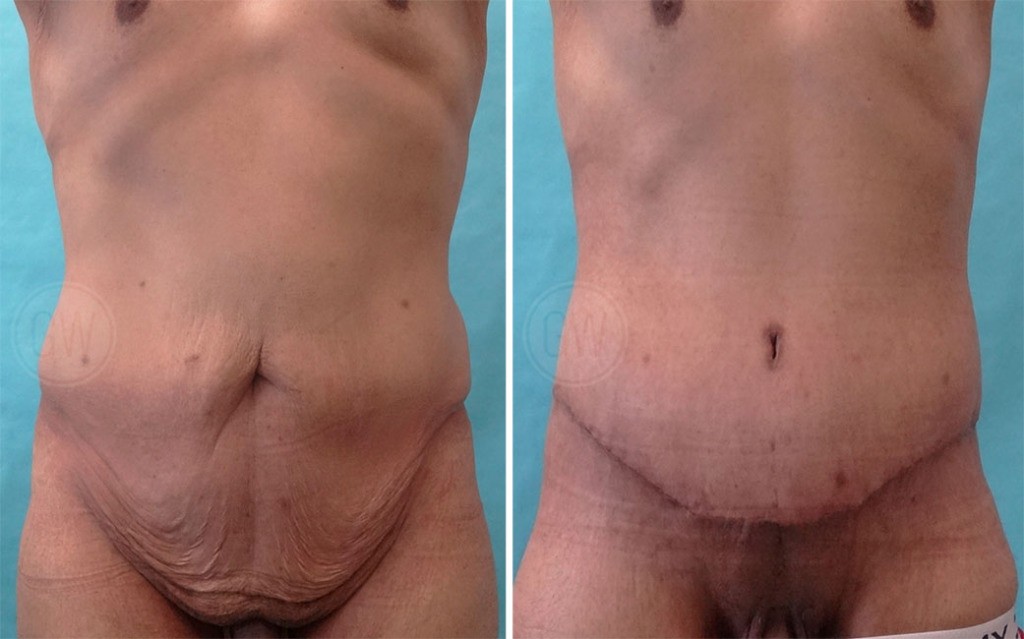
26 Sep Recovery After Lower Body Lift
For many people in Perth, significant weight loss, ageing or pregnancy can lead to excess skin around the lower body that does not respond to diet or exercise. This loose or redundant skin may contribute to physical discomfort, restrict clothing choices, and, in some cases, make daily hygiene more difficult. These concerns are often experienced around the abdomen, flanks, outer thighs, and buttocks, where skin laxity tends to be most prominent following substantial body changes.
A lower body lift is a surgical procedure that removes this excess skin and repositions the remaining tissue to improve contour in the lower trunk. While the operation itself is a key step in addressing these changes, recovery is just as important. The post-operative period requires patience, planning, and close adherence to aftercare instructions to support the optimal healing outcome over time.
Dr Guy Watts, Specialist Plastic & Reconstructive Surgeon based in Perth, Western Australia, provides his patients with personalised care from consultation through to long-term follow-up. This guide explains what to expect after lower body lift surgery, offering accurate, localised information to help patients understand, prepare for, and manage the recovery process.
Take our quiz, and find out if you are ready for surgery
Inside The Procedure: What A Lower Body Lift Involves
A lower body lift is a comprehensive operation that addresses multiple areas of excess skin and soft tissue laxity in one procedure. It is often performed after significant weight loss or when skin has lost elasticity due to age or pregnancy. The procedure is carried out under general anaesthesia and involves a circumferential incision around the lower torso. This allows for removal of excess skin and repositioning of the remaining tissue across the abdomen, hips, outer thighs and buttocks.
Because the procedure treats several regions at once, it is typically more extensive than single-area surgeries. Recovery is longer and often more involved. Swelling, bruising, and changes in sensation are common during the early phases. Healing depends on several individual factors, including general health, skin condition, smoking history, and the amount of tissue removed.
Dr Guy Watts sees patients at his clinic in Perth and takes a tailored approach to each procedure. He discusses incision placement, expected outcomes, and recovery timelines in detail. Patients are guided not only through the physical healing process but also through the emotional and practical aspects of recovery to ensure they feel supported at every stage.
The Immediate Post-Surgical Phase: Hospital Recovery
Following surgery, most patients stay in hospital for one to three nights. During this time, medical staff monitor vital signs and begin early post-operative care. Dressings are applied, and surgical drains may have been placed to reduce fluid build-up. These are usually removed within the first week.
Tightness around the abdomen and lower body is normal in the early days, particularly when moving or standing. Pain is managed with prescribed medication. Gentle movement is encouraged soon after surgery to support circulation and reduce the risk of blood clots. Repositioning techniques are taught in hospital to minimise strain on the surgical site.
Dr Watts and his team provide guidance on how to move safely, rest comfortably, and manage early post-operative care. Advice is given on posture, including using pillows to support the knees and upper body while lying down. This support continues once patients are discharged and begin recovery at home.
The First Two Weeks At Home: Managing Discomfort And Supporting Healing
Once home, the focus shifts to wound care, light movement, and rest. Most patients need help with tasks such as cooking, dressing, and showering during the first week. Activities that place strain on the torso must be avoided, including lifting and bending.
Bruising and swelling are still present during this time. The surgical area may feel numb or firm. Dressings are changed regularly, either at home or during reviews at Dr Watts’ clinic in Perth. Maintaining good hydration and nutrition supports tissue repair. Smoking and alcohol should be avoided to reduce the risk of healing complications.
Compression garments are introduced during this phase and are worn daily, except when showering. These garments provide support and help reduce swelling. Patients are encouraged to contact Dr Watts’ Perth-based clinic if they have any questions or notice unexpected symptoms.
DOWNLOAD DR WATTS’ GUIDE TO JAW AND CHIN SURGERY

Week Three To Week Six: Gradual Improvement And Functional Return
By the third week, patients often begin to feel more at ease and independent. Bruising begins to fade, swelling gradually subsides, and energy levels improve. However, heavy lifting, bending and high-impact movement should still be avoided.
Some people may return to light desk-based work at this stage, depending on the demands of their job. Driving can usually resume once patients are no longer taking prescription pain relief and can move safely and comfortably. Each person heals at a different pace, and Dr Watts provides individual advice based on clinical progress.
Follow-up appointments are scheduled during this stage at Dr Watts’ Perth clinic. These reviews help assess healing and address scar care. Compression garments are generally still worn to support ongoing tissue recovery.
Six Weeks And Beyond: Long-Term Recovery And Final Results
By six to eight weeks, many patients resume their regular routines, including light physical activity and social outings. Swelling continues to decrease, and incisions begin to mature. Scars may still appear pink or raised but typically improve in appearance with time and proper care.
Dr Watts provides detailed guidance on scar management, including recommendations for silicone-based products and massage techniques if appropriate. While some changes are visible early, internal healing and skin adaptation continue for six to twelve months.
Ongoing reviews with Dr Watts at his clinic in Perth ensure recovery stays on track. These follow-ups allow for early identification of concerns and help align the final outcome with the patient’s surgical goals.
Body Lift Surgery Before and After Photos
Photo disclaimer:
Each surgical procedure produces unique outcomes influenced by factors such as body composition, skin tone, laxity, age, and genetics. The before-and-after photographs displayed are of actual patients and are provided for informational purposes only.
Setting Realistic Expectations And Addressing Emotional Recovery
Physical healing is only one part of recovery. It is common to experience emotional changes following surgery, including periods of frustration or low mood. These responses are normal, particularly when mobility is limited or the body feels unfamiliar during early recovery.
Dr Watts understands the emotional impact of major surgery and addresses this during consultations. His approach includes discussing what to expect both physically and emotionally, helping patients feel prepared and supported throughout the process.
Patients in Perth and regional WA often find comfort in knowing they have continued access to care through Dr Watts’ clinic. The recovery journey is approached as a shared process, with support provided at every stage.
Living In Perth: Climate And Lifestyle Considerations
The Perth climate presents unique considerations during recovery. High UV exposure can affect healing incisions, which is why sun protection is essential. Patients are advised to wear protective clothing and avoid direct sunlight during the healing period. For general bodylift recovery information, see Recovery After a Bodylift.
The dry air can also contribute to skin sensitivity or dryness, especially around the incision sites. Moisturising with non-irritating products can help reduce discomfort. Staying well-hydrated and avoiding overheated environments during summer can also support comfort and healing.
Patients living alone or in remote parts of WA may consider temporary accommodation near Dr Watts’ clinic in Perth during the early recovery period. His team can assist in planning care that suits each patient’s needs and location.
FAQs About Recovery After Lower Body Lift
Do’s And Don’ts For Pre- And Post-Operative Care
Planning ahead improves the experience of surgery and recovery. Before surgery, Dr Watts recommends stopping smoking, organising help at home, and preparing meals in advance. Time off work and assistance with daily activities should be arranged to reduce physical stress during recovery.
After surgery, follow all care instructions closely. Maintain a nutritious diet, wear compression garments as directed, and avoid heat or sun exposure. Monitor your symptoms and report anything unexpected. Avoid heavy lifting or exercise until cleared by Dr Watts. Follow-up appointments are essential, even if healing seems to be going well.
Local Insights: Plastic Surgery Recovery In Perth, WA
Recovering from surgery in Perth requires an awareness of the local climate and environment. High UV levels demand careful sun protection. Light, breathable clothing and avoiding time outdoors during peak UV hours are strongly advised.
Perth’s dry heat can also affect skin recovery. Using non-fragranced moisturisers and staying well-hydrated can help maintain skin comfort. Patients in regional WA may benefit from recovery stays in Perth to ensure timely follow-up care and access to medical support.
Dr Guy Watts provides care tailored to Western Australian patients and understands the unique recovery needs of those living locally or in more remote areas. His clinic offers support at each stage of the journey, with consistent care that reflects both medical best practice and the realities of life in WA.
Further Reading
- Read more about Dr Guy Watts’ Blog on Treating Loose Skin after Pregnancy – Causes and Options
- Read more about Dr Guy Watts’ Blog on How to Get a Smaller Waist
About Dr. Guy Watts – MED0001539378
FRACS (Plas) – Specialist Plastic Surgeon In Perth WA
Dr. Guy Watts is a Specialist Plastic Surgeon (AHPRA MED0001539378) with an extensive career that spans across renowned plastic surgery clinics worldwide. His experience has been honed through invaluable experiences at esteemed establishments such as the New York Eye and Ear Infirmary and the renowned Pitanguy Clinic in Brazil.
Having collaborated with the foremost cosmetic plastic surgeons on a global scale, Dr. Watts has chosen to return to Perth after a 17-year journey of intensive training and invaluable professional experience to bring the latest practices and technology in cosmetic plastic surgery to his patients.
Dr. Watts is a Fellow of the Royal Australasian College of Surgeons (FRACS) and a Member of the Australian Society of Plastic Surgeons (ASPS), Australasian Society of Aesthetic Plastic Surgeons (ASAPS) and the International Society of Aesthetic Plastic Surgeons (ISAPS).
Read about the potential Risks and Complications of Surgery
Read the Patient Information and Resources
About CLINISPA
Clinispa is Dr Watts’ bespoke medical clinic performing Cosmetic Aesthetic treatments. At Clinispa, we offer advanced clinical treatments in a luxurious and calming environment, tailored to support your skin’s health and appearance.
Clinispa aesthetic services are performed by Dr Guy Watts’ nursing professionals, who have a passion for and solid understanding of facial aesthetics.
All Clinispa clients are considered individually, with a personalised treatment plan consisting of advanced scientific approaches to cosmetic aesthetics. We incorporate innovative technologies in conjunction with superiorly formulated skin care.
For more information about the full range of Clinispa Aesthetic of Cosmetic Treatments visit the Clinispa website










Sorry, the comment form is closed at this time.